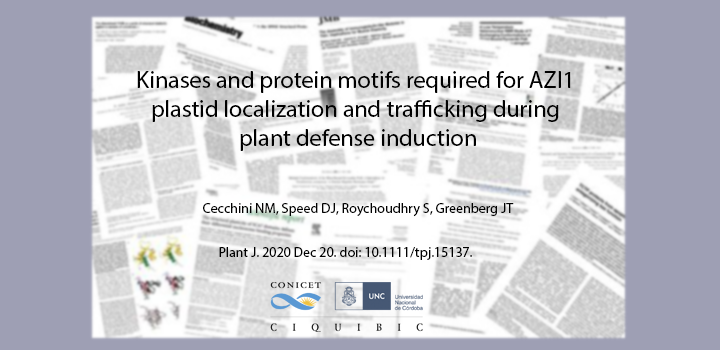Cecchini NM et al. Plant J. 2020
The proper subcellular localization of defense factors is an important part of the plant immune system. A key component for systemic resistance, lipid transfer protein (LTP)‐like AZI1, is needed for the systemic movement of the priming signal azelaic acid (AZA) and a pool of AZI1 exists at the site of AZA production, the plastid envelope. Moreover, after systemic defense‐triggering infections, the proportion of AZI1 localized to plastids increases. However, AZI1 does not possess a classical plastid transit peptide that can explain its localization. Instead, AZI1 uses a bipartite N‐terminal signature that allows for its plastid targeting. Furthermore, the kinases MPK3 and MPK6, associated with systemic immunity, promote the accumulation of AZI1 at plastids during priming induction. Our results indicate the existence of a mode of plastid targeting possibly related to defense responses.
Authors: Cecchini NM, Speed DJ, Roychoudhry S, Greenberg JT



